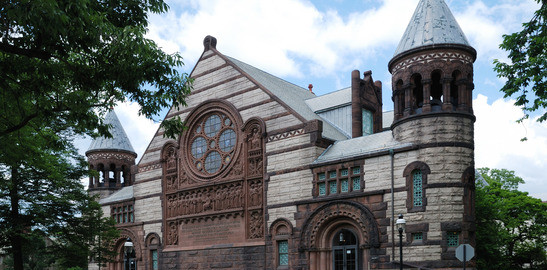Two 2019 Elite College Rankings That Measure ROI
The decision that their son or daughter will attend an elite college or university to which they have been admitted calls for a substantial financial commitment from even an affluent American family. Tuition, room, board, and fees for a bachelor’s degree at the best public institutions can exceed $100,000. Their elite private counterparts, both national universities and small liberal arts colleges, can cost over $280,000 for an undergraduate degree.
Many families, in order to be confident of their decision, seek information on the potential return on such a high investment in education. For this reason, two publications, Money Magazine and Forbes Magazine, conduct studies and publish annual rankings that make return on investment central to their methodologies. Money’s special issue is titled “Best Colleges for Your Money” and the Forbes publication is their “Best Value Colleges” edition.
The methodologies used by these two publications are different from the methodology used by US News & World Report in their popular annual ranking of colleges and universities. U.S. News & World Report relies more on certain pedantic considerations such as admissions selectivity that are not, according to Money and Forbes, germane to the most important measurable outcome — lifetime earnings. Hence, Money and Forbes focus less on the exclusivity and peer prestige of institutions and more on whether an institution provides a long-lasting economic value to graduates.
Money and Forbes use similar criteria to compute their rankings. Money analyzed graduation rates, tuition charges, family borrowing, alumni earnings, and many other metrics to identify the country’s top-value institutions. Their criteria were assigned to three categories, Educational Quality, Affordability, and Alumni Success, and each category was weighed equally as one-third of their total score.
- Quality of Education was weighted by the following factors:
- Six-year graduation rate (30%)
- Value-added graduation rate (30%)
- Peer quality (10%)
- Instructor quality (student-to-faculty ratio) (10%)
- Financial condition of institution (20%).
- Affordability was weighted by the following factors:
- Net price of a degree (30%)
- Debt per student (20%)
- Student loan repayment and default risk (15%)
- Value-added student loan repayment measures (15%)
- Affordability for low-income students (20%)
- Alumni Success was weighted by the following factors:
- Earnings of graduates (12.5%)
- Earnings adjusted by major (15%)
- College Scorecard 10-year earnings (10%)
- Estimated market value of alumni’s average job skills (10%)
- Value-added earnings (12.5%)
- Job meaning (5%).
- Socio-economic mobility index (20%)
The Forbes methodology is based on the set of six factors shown below. The relative weight accorded each factor is indicated.
- Alumni Earnings – 20%
- Net Price – 20%
- Net Debt – 20%
- School Quality – 20%
- Timely Graduation – 10%
- Pell Grant Recipients – 10%
The top 25 institutions on the Money and Forbes rankings are compared side by side in Table A, below.
Table A: Institutions with the Best Returns on Investment
| Rank | Money Magazine | Rank | Forbes Magazine (Best Value) |
| 1 | Princeton | 1 | UC – Los Angeles |
| 2 | UC – San Diego | 2 | UC – Berkeley |
| 3 | UC – Irvine | 3 | Brigham Young |
| 4 | UC – Los Angeles | 4 | UC – Irvine |
| 5 | Stanford | 5 | Washington – Seattle |
| 6 | MIT | 6 | Harvard |
| 7 | UC – Berkeley | 7 | Stanford |
| 8 | CUNY Bernard Baruch College | 8 | Princeton |
| 9 | Michigan – Ann Arbor | 9 | UC – San Diego |
| 10 | Virginia – Charlottesville | 10 | Amherst |
| 11 | UC – Davis | 11 | UC – Santa Barbara |
| 12 | Cal Tech | 12 | CUNY Bernard Baruch College |
| 13 | Rice | 13 | UC – Davis |
| 14 | UPenn | 14 | Yale |
| 15 | Yale | 15 | Williams |
| 16 | Harvard | 16 | Pomona |
| 17 | Texas A & M – College Station | 17 | MIT |
| 18 | Vanderbilt | 18 | Duke |
| 19 | Georgia Tech (tie) | 19 | North Carolina – Chapel Hill |
| 19 | Washington – Seattle (tie) | 20 | Florida – Gainesville |
| 21 | Massachusetts Maritime | 21 | Virginia – Charlottesville |
| 22 | California State – Long Beach | 22 | Dartmouth |
| 23 | Florida – Gainesville | 23 | Swarthmore |
| 24 | Washington & Lee | 24 | Georgia Tech |
| 25 | Illinois – Urbana-Champaign | 25 | Rice |
Although both publishers focus their studies on return on educational investment, the resulting rankings are significantly different. The Forbes top 25 lists three small liberal arts college, Amherst (#10), Williams (#15), and Pomona (#16). Money lists Williams as its highest ranked small liberal arts college at #26.
It’s apparent that the University of California system performs extremely well under this type of analysis, with five of its campuses in the top 25 on both lists. UC – Los Angeles and UC – Berkeley are ranked #’s 1 and 2 on the Forbes list.
To Princeton’s distinction, Money ranks that institution first, as does U.S. News & World Report, even though the two resources use substantially different methodologies in determining their rankings. Forbes ranks Princeton at #8.
At the start of our engagement with our students, IvySelect college admissions consultants develop a thorough understanding of you as an individual, your educational and career goals, academic record, accomplishments, strengths, weaknesses, interests, talents, and preferences. With this information, we work with you to create a comprehensive admissions strategy that is uniquely yours. Then we assist you step-by-step in the strategy’s successful execution.





